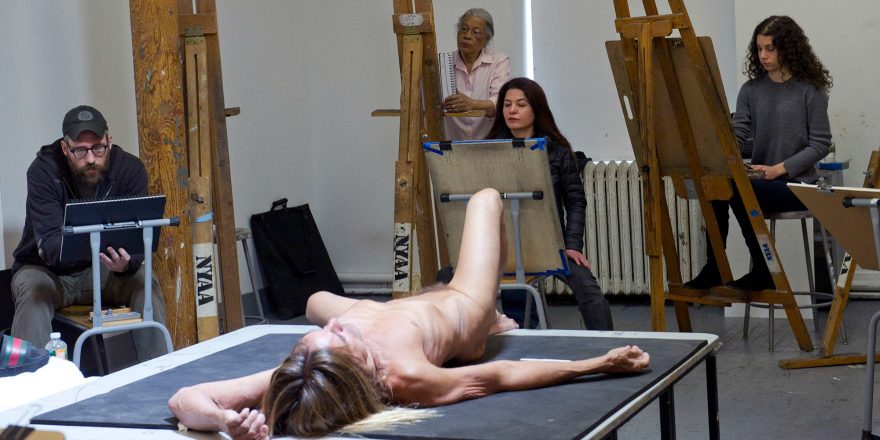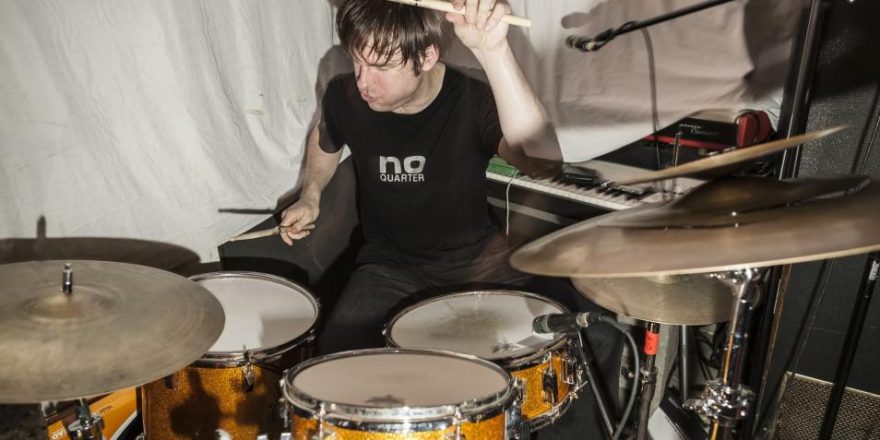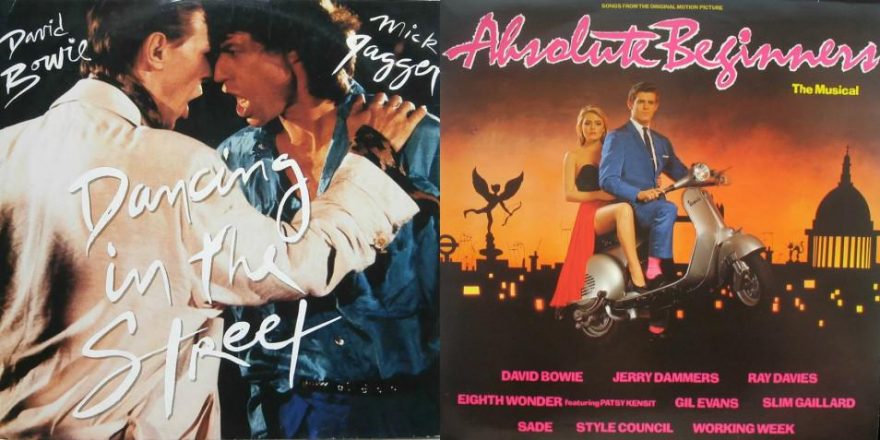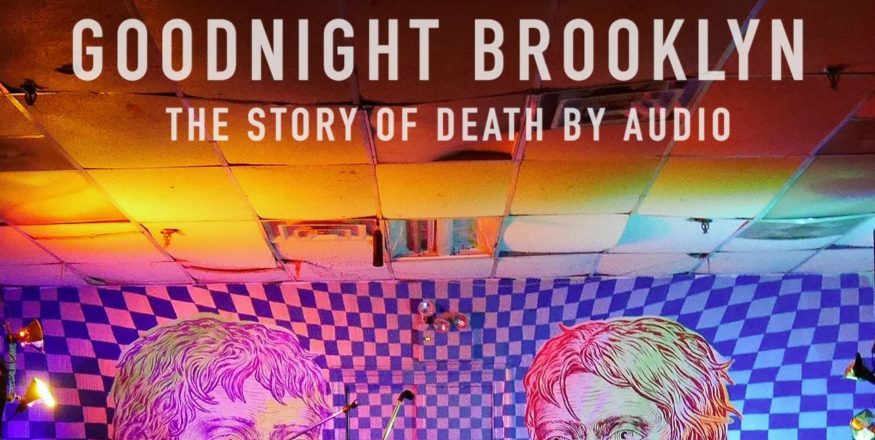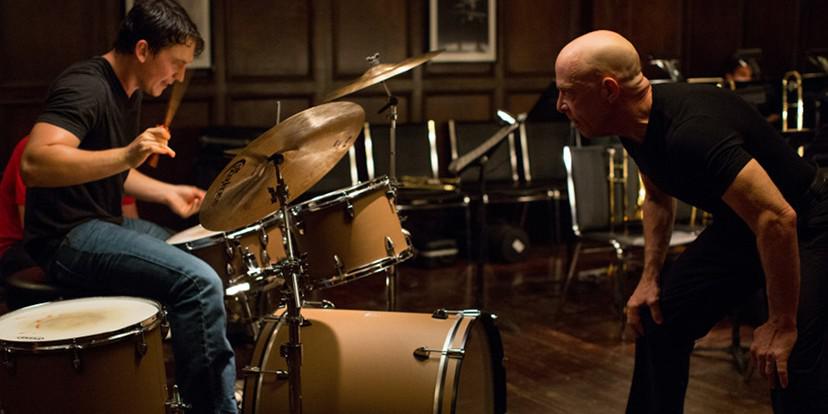“I use my body as an object of commerce.”
— Iggy Pop, November 3, 2016 interview with artist Jeremy Deller moderated by poet Tom Healy
When I first heard about U.K. artist Jeremy Deller’s latest piece, Iggy Pop Life Class, I was skeptical. At first glance, there seemed something pat and unsophisticated about a conceptual piece of art with Iggy Pop at the heart. Even though I find him to be an immensely inspirational figure, Life Class seemed to leverage his celebrity in a blatant and uncreative way. I was expecting an un-rigorous piece of work that I could dismiss off-hand.
The show’s conceit is simple: singer and rock icon Iggy Pop posed naked in front of a diverse group of twenty-two artists for four hours in March of 2016. Every sketch and portrait of Pop was gathered for the Brooklyn Museum’s permanent collection — and, for the current show, Deller contextualized selected pieces from Life Class with a small group of male nude paintings, photos and sculptures from the aforementioned collection.
I attended the press preview of Deller’s latest piece in November, and as I listened to him talk about his work, I felt my skepticism replaced with feelings of gratitude and awe.
Iggy Pop has…a body that is key to an understanding of rock music.
The earnest and articulate Deller was open, available and clearly pleased with how the piece had turned out, and he had every right to be.
“Iggy Pop has…a body that is key to an understanding of rock music, and that has been paraded, celebrated and scrutinized through the years in a way that is unusual for a man,” Deller said. “I saw this as a way to look at the iconography of rock music in a different way.”
Deller’s sincerity was disarming. Despite the decrepitude of the genre, rock & roll still carries the pretense of an outsider’s art form and a kind of folk art. The Stooges were a prototypical garage band, conceptualized in Iggy’s family’s trailer and disseminated across the world to the highest reaches of popular art. Iggy Pop himself managed to transcend the implosion of his first successful band and became the enfant terrible of rock & roll during the ’70s and ’80s. In 1982, when Iggy Pop’s career was at a low point and his time with the Stooges was considered a curiosity, Pop released a limited edition memoir called I Need More that featured a cover photo of a topless Pop sucking on the breast of a marble statue. The photo illustrates a broken boundary between high and low art where Pop uncomfortably and defiantly resides.
Life Class shows us something beyond the machinery of celebrity, and we are left with the body of an American.
The selection of work from the drawing class hanging in the gallery is both revealing and revelatory; the artists’ craft uncovers facets of Pop that the camera cannot capture. With every advance in technology, something is lost and something is gained. Deller’s Life Class shows us something beyond the machinery of celebrity, and we are left with the body of an American. The aura from Pop’s body is held up to the light, coaxed and sometimes even undermined — but somehow the process remained redemptive. Pop’s humanity is cherished by these artists in a way a photograph can never capture.
Deller brought everything together, but it’s the work of his recruited artists that gives Life Class its tinge of authenticity. I met a number of the participants: some of them had never heard of Iggy Pop and some were beside themselves with excitement when their subject was revealed to them the evening before the drawing class. All of them seemed genuinely touched and impressed with Pop’s generosity during the sitting. He came out to meet everyone before the work began and wandered around the room and observed their work while the session went on.
As I saw Iggy Pop move across the stage during the early November gallery talk, I was amazed at the humbleness of his movement.
As I saw Iggy Pop move across the stage during the early November gallery talk, I was amazed at the humbleness of his movement. His hips are twisted so that at rest he’s aligned into a natural and graceful “S-curve,” and he moves slowly and with great control. He presented himself to each audience with a frankness and openness that seems completely at odds with the possessed performer in the showbiz arena.
Iggy’s physicality and performative nature are also on display in 2016 with two excellent contemporary celebrations of the Stooges: Jim Jarmusch’s filmed paean to the band, Gimme Danger, and Jeff Gold’s new book (published by Third Man), Total Chaos: The Story of the Stooges, as told by Iggy Pop. Both of these works celebrate the Stooges and Iggy Pop’s legacy in complimentary ways.
Jarmusch’s Gimme Danger was eight years in the making. Iggy is appropriately given the most screen time, including an in-depth interview that touches on the entire arc of the band’s career. Through a generous collection of photos, ephemera and live footage, we witness the slapstick formation, rise, dissolution and redemption of a band whose albums still retain an unparalleled and unmediated rawness and energy. “In the Ashetons [the two brothers who made up the Stooges guitar/bass and drums], I found primitive man,” intones Iggy at one point.
In a way that resonates with the collision of high and low art on direct display with Life Class we learn that Pop’s work at a local Ann Arbor record store brought him into contact with an American outsider avant-garde that seasoned the Stooges’ music with the sounds ranging from instrument inventor and composer Harry Partch to John Coltrane and Pharaoh Sanders, James Brown and Howlin’ Wolf. These building blocks were channeled into the sharpened murk of the band’s greatest statement, Fun House, perhaps the most future-leaning album of the ’70s.
Iggy tells us, ‘They couldn’t get a decent…track of the band unless I danced.’
There is not much extant archival footage of the Stooges playing live that’s synced with sound, so in Jarmusch’s film we often see Iggy’s brilliantly manic acrobatics set to music culled from other sources. Iggy tells us that during the recording of their first album, producer John Cale discovered that the band played better if Iggy danced around in the live room while they recorded. Iggy tells us, “They couldn’t get a decent…track of the band unless I danced.”
In the self-titled companion book to Life Class, Pop talks about discovering how his body can translate the music for the audience: “I noticed you needed kind of a transmitter or transformer sometimes. Someone or something to receive the energy that’s being made with…the musical instruments…and interpret it or translate it in a way that allows it to engage.”
This transmitter — as embodied by Pop’s transcendent dancing — is deeply engraved into the Jarmusch film. We get to witness just about every scrap of Stooges footage, and we see Iggy’s absolute deranged commitment to movement. It’s desperate, it’s outlandish, it’s alien, but most of all it’s completely spellbinding. Despite what seems to be his instrumental presence for the Stooges, Iggy describes himself as an outsider in his own band. The three musicians, Scott and Ron Asheton and bassist Dave Alexander “had a way of locking with each other and listening with each other…what William S. Burroughs used to call a third mind… I could never really enter it,” he says. Iggy would move his body to uplift the music and engage the audience as the other band members stood immobile behind him.
Indeed, he would thrash around in a kind of virtuosic movement that he likened to Pete Townsend’s guitar abuse.
Indeed, he would thrash around in a kind of virtuosic movement that he likened to Pete Townsend’s guitar abuse. “I was using fingernails on my chest like a windmill [Townshend’s signature overhand guitar gesture], and it made little cuts,” he says. “The sight of blood seemed to get the audience really excited.” Iggy Pop abused his body for years on stage (and off) — so much so that he told an audience at a recent screening I attended of Gimme Danger that by the late ’80s, he “couldn’t walk across the room any more due to lots of cartilage loss in my joints.” He turned to Qigong to heal his body and enable him to continue with his relentless performance schedule. Watch the incredible live Austin City Limits concert from the Post Pop Depression tour to see how a 69-year-old man puts performers of all ages to shame.
And then, of course, there’s his torso — and the fact that Iggy Pop never wears a shirt on stage. In Total Chaos he tells us that his inspiration for this comes from his many trips to the Michigan University Library, where, in books, he “saw the Pharaohs with no shirts and I thought, ‘It just looks so classic. I have a long torso. I could do that.’”
So there was a kind of perversity to Jeremy Deller’s art project Life Class. Here’s a man who never sits still, whose mercurial essence cannot be contained. What would happen if he sat for a life drawing class?
Deirdre Hazeley, whose profile drawing of Pop suggests the Crazy Horse memorial, described the experience as “exhilarating”; other artists spoke of a supportive environment of warmth and non-competition. The pieces contain a wide range of skill and technique. Some look like idle doodles on a middle school desk, while others resonate with Iggy Pop’s essence (or even of James Osterberg, Iggy Pop’s given name).
Pop contrasted the reverence and discipline in the classroom to the assaultive nature of photography.
At first the artists were given the opportunity to sketch Iggy during a few quick poses. Some of this work is included in the show. There are sketches of the general shape of the body, some more abstract poses and more gestural drawings. Then Iggy was asked to pose for three hours holding a pose with a staff in his right hand — a kind of regal pose, with, as Iggy said in the lecture, “my penis hanging over the side of a box.” The strongest, most detailed and powerful works were done during this extended pose. Pop contrasted the reverence and discipline in the classroom to the assaultive nature of photography. Deller said the class had the surprising atmosphere of a library.
There’s a generosity to the work taken as a whole. In the small gallery of the Brooklyn Museum we can sense Iggy Pop’s humility, and humanity: qualities usually obscured by the blunt hand of show business. Deller’s vision for the piece was almost naive. Before the Brooklyn Museum sponsored the piece, he imagined the portraits would be given to the Smithsonian as “a gift to the American people” as a kind of iconic representation of a rock musician. This kind of emphatic cliché might feel more at home in the cynical halls of Congress. But Deller’s dream hinged on the hospitality of his subject and sensitivities of the artists he selected. During this dark time of divisiveness, it was heartening to see that the artists came from all walks of life.
In all this reflection we can see a kind of redemption. As Iggy said, during his talk at the Brooklyn Museum, “I felt cleansed of something when I left…it was not a ‘gig.’” I take him to mean that this was an event that transcended the typical crassness of the showbiz milieu.
It took ten years for this project to finally come to fruition. A decade ago — at age 60 — Pop was intrigued by the concept, but told Deller that he wasn’t old enough. Now, with the release of his record Post Pop Depression, Gimme Danger, Total Chaos and the Life Class show, we get the sense that Pop is taking stock of his accomplishments. As the late Leonard Cohen recently told New Yorker editor David Remnick, “Putting your house in order, if you can do it, is one of the most comforting activities, and the benefits of it are incalculable.”
We get to celebrate the brutality and energy of the Stooges in Jarmusch’s Gimme Danger and Jeff Gold’s Total Chaos — and you should go out and take in these works right away. But it’s perhaps the Deller collection at the Brooklyn Museum that truly peers beneath the veneer of show business and reveals the core of an artist: the desire to be seen in all our complexity, shorn of the exhausting commerciality of the gig.
Iggy Pop Life Class is now showing at the Brooklyn Museum through March 26, 2017.
(Photo credit: Elena Olivo, Brooklyn Museum)


